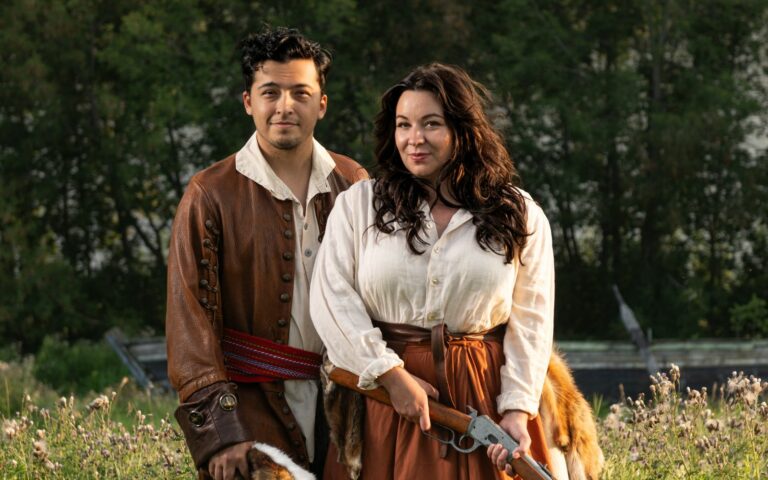By Matthew Teklemariam
Inside the wild world of an eccentric soul legend, a colourful crew of collaborators, and a never-ending pool renovation.

Both a play and a showcase of Métis performing arts, You Used To Call Me Marie finds playwright Tai Amy Grauman examining the stories of the Callihoo women – early Métis residents of Alberta who witnessed the birth of Canada as a nation and chronicled their lives in the Alberta Historical Review – and their descendants.
Spanning across decades, moving from some of the earliest members of the Callihoo family all the way up to the present day, the play is broken up into eight distinct yet intertwined stories that shift through tales of powerful love and enduring resilience. Starring Grauman herself, Aren Okemaysim, and an ensemble of dancers and musicians that includes Tkarón:to-based theatre artist Cole Alvis, the on-stage dialogue will be bolstered by the kinds of genre and era-spanning music and dance that has informed the lives of this ensemble of Métis performers.
We caught up with Alvis to talk about Métis culture, the show’s musical moments and the meaning behind it all. We also asked her to make us a playlist featuring some of her favourite Indigenous artists, which can be found below.
In your own words, what is the show about? Why does the story resonate right now?
You Used To Call Me Marie by Tai Amy Grauman is a love story that has Métis women at its centre. The play speaks to stories that often go untold, even in our own communities. As a Two-Spirit Turtle Mountain Michif (Métis) artist who uses she/her pronouns, it’s meaningful to be among the Star People telling this story of Métis women, past, present, and future.
What has the rehearsal process been like?
There has been laughter and music and an undercurrent of care that buoys us through the work. I’m looking forward to performing for audiences in Vancouver, and in Ottawa when we run at the National Arts Centre Indigenous Theatre in June.
There are also going to be some post-show discussions after the performances – what do you hope to be discussed there?
A hope I have for the post-show discussions is for audiences to reflect on Métis culture and how we continue to shape these lands and waterways.
The show’s description promises “era-spanning dance and live music, from French fiddle to contemporary country” – how do these styles lend themselves to the show?
Music is essential to Métis culture and it’s a gift to have renowned fiddler Kathleen Nisbet and multidisciplinary artist Krystle Pederson lending their talents to the music in the show.
Why did you choose some of the songs on your playlist? Do you have any absolute favourites?
Making playlists is a hobby, and this playlist features Indigenous artists from near and far. A favourite song is “One Milkali (One Blood)” by Electric Fields. They’re featured on Snotty Nose Rez Kids’ latest single “Red Future,” and when I heard them I wanted more. A duo from down under, Electric Fields merge electronic music with Blakfulla (Indigenous Australian) culture, singing in Pitjantjatjara, Yankunytjatjara and English – what’s not to love?
Why should everyone come to see this show?
There’s live music, love stories, and horses. We’re bringing the Métis love and we can’t wait to share it with you.
You Used To Call Me Marie runs April 18 to 28 at the York Theatre (Vancouver)
By Matthew Teklemariam
Inside the wild world of an eccentric soul legend, a colourful crew of collaborators, and a never-ending pool renovation.
By Johnny Papan
Scott Crawford’s latest documentary charts D.O.A. frontman Joe Keithley’s unlikely journey from punk rocker to politician.
By Prabhjot Bains
Actor Kate Mara on stepping outside of her comfort zone to enter Tim Robinson’s unhinged cringe-comedy world.